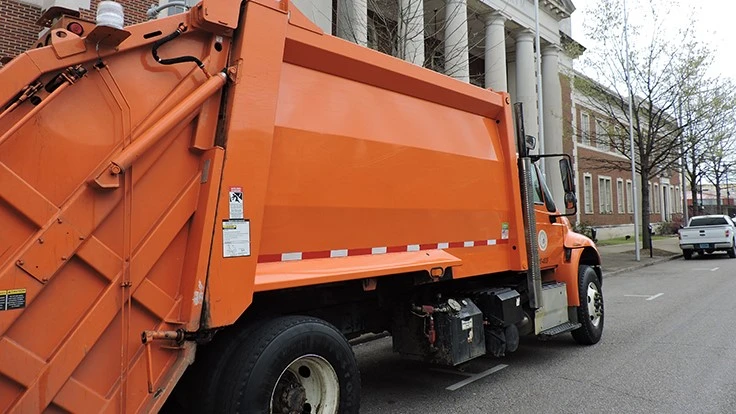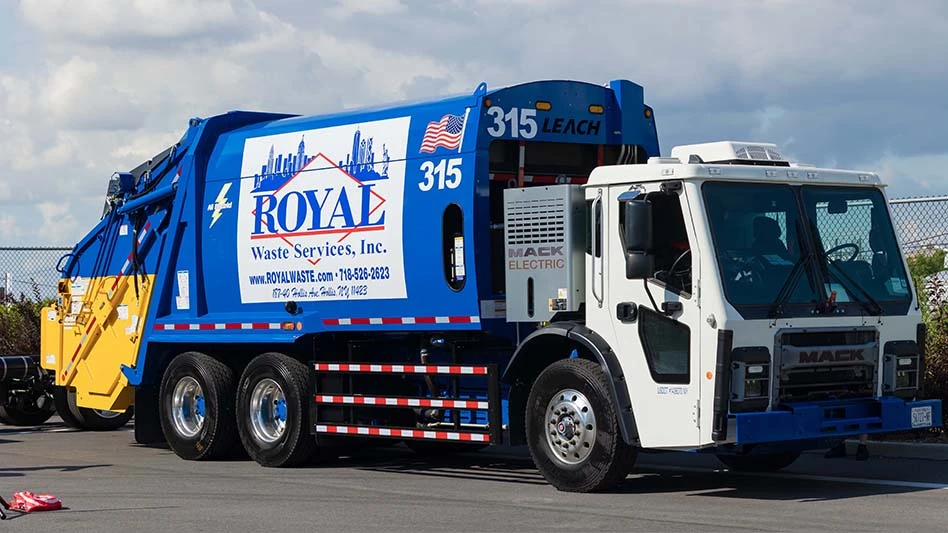The proliferation of in-vehicle technology has given haulers a suite of capabilities the previous generation could only dream of. With advanced routing capabilities, instant data capture and driver behavior tracking, today’s route optimization software is becoming the norm in many fleets throughout the country.
Recognizing the benefits this software could have on increasing efficiency and promoting accountability, the city of Montgomery, Alabama, made the decision to outfit its fleet of 80 residential and commercial waste vehicles with Atlanta-based Rubicon Global’s RUBICONSmartCity technology this past June for a six-month trial run. Through smartphones loaded with the Rubicon hauler mobile app as well as plug-in devices that connect to the truck’s OBD II port, the technology presents an opportunity for the city to better service its 61,000 residences.
Montgomery Mayor Todd Strange says the city decided to invest in technology across its departments five years ago, but it wasn’t until Montgomery City Public Works Director Chris Conway met with Rubicon Global Director of Smart Cities Conor Riffle at the Municipal Waste Management Association’s U.S. Conference of Mayors in fall 2017 that the city got serious about investing in its waste operations.
“We had a ‘come to Jesus’ meeting where we decided we wanted to weave technology throughout all of our operations in the city that we could become a smart city, so to speak,” Strange says. “So, my managers and cabinet members started looking for ways that we could leverage technology, make our operations more efficient, more cost- effective and give better customer service. That was the motivation for us to look at Rubicon Global’s technology when the opportunity came around.”
Eyes and ears on the street
There are a lot of features users can access with fleet routing software. One of the major benefits of RUBICONSmartCity in particular, according to Rubicon SVP of Policy & Strategic Initiatives Michael Allegretti, is that it can serve as a type of roaming data center tracking issues throughout the city.
“We are always focused on building products that help our customers and our potential customers drive more value in their day-to-day operations, whether that’s operations of waste, recycling and diversion, or more broadly speaking, operations of an entire city,” Allegretti says. “RUBICONSmartCity is an exciting product because we look at city fleets, particularly waste service vehicles, as the eyes and ears of cities. These vehicles go down every street in every city at least once a week and can be used for tracking a myriad of issues.”
According to Conway, the software is easy for drivers to use, simply requiring the push of a button to document potential areas of concern that need addressed.
“This software can tell you if you have property maintenance issues, street maintenance issues, traffic maintenance issues—whatever those things might be, you’ve got a vehicle that’s out there driving every street in your city that’s able to give you real-time feedback that can be leveraged so you can respond in a more proactive manner,” Conway says.
Conway says that the software’s ability to easily capture data and pictures specific to waste-related issues was one of the main features that motivated the city to test Rubicon’s equipment. Through the dash-mounted smartphone, drivers were able to notify managers and supervisors of problems with improperly placed or missing carts, contamination and other issues, leaving a paper trail in the process that enforced accountability for both city workers and residents.
It’s this information that’s invaluable support for haulers when there are questions of culpability, Riffle says.
“After 6 months, Montgomery’s drivers have documented more than 25,000 times when they haven’t been able to service a location, and they’ve been able to document the reason why they haven’t served that location,” Riffle says. “That includes hundreds and hundreds of photos of things like bins not being out or bins being improperly filled or bins being blocked. And what this gives the city is the ability to provide feedback to the customer that says, ‘Hey, not only were we unable to service your bins, here’s the reason why.’”
Moving into the digital age
Beyond tracking issues out on the road, routing software gives drivers and fleet managers more modern and versatile tools for completing pickups. While haulers used to have to rely on dated maps and hardcopy documentation, RUBICONSmartCity tracks everything digitally.
“The smart device in the cab of the truck allows us to get away from the days of the paper clipboard where you hope the driver is able, willing or has the time to write stuff down while behind the wheel. The software also lets us know on a real-time basis where the driver is at any time during the day or how much of a percentage they have completed on a given route,” Conway says. “We used to have to rely on reams of old computer printouts. Now we’re in a digital age where we can track things instantaneously.”
One feature that the city of Montgomery didn’t choose to implement during its trial period with the software was its route mapping feature. However, Conway says that is the next logical extension for the city as it moves forward with the new technology in 2019. Beyond helping increase the speed and efficiency of the drivers’ routes, Conway says that he anticipates the smarter navigation capabilities will have a noticeable difference on the cost of collection.
“We really feel like there’s probably going to be a large opportunity to consolidate some routes and reduce the number of trucks that we need once we start using our routing software,” Conway says. “That is an opportunity to save some real dollars, not just from a fleet management standpoint, but from a purchasing standpoint.”
Going all in
Conway says the city made the decision to purchase the RUBICONSmartCity technology only a couple months into the trial period after seeing how seamlessly it was adopted. He says that after the first month of use, roughly 25 percent of drivers were using the system as intended. This number jumped to roughly 90 percent by the end of the six-month period thanks to an investment in training, as well as a willingness to learn.
“It’s a very user-friendly application. The main thing is you need buy-in from the top down and from the bottom up,” Conway says. “And we certainly had that with our organization. We’re all involved in this. Everybody knew that we were trying something new with this pilot, and we stressed to them that it was only going to be as useful as we made it. We had a tremendous buy-in from our employees.”
Conway says that by focusing on its benefits rather than using it as a “Big Brother” tool for reprimanding staff, the city has seen its waste collection efforts improve dramatically, setting the stage for greater adoption in the coming months.
Getting recognized
In recognition of the city’s ongoing efforts to use technology to improve how it serves its customers, Montgomery was selected as a Smart 50 Award winner in the Urban Operations category in January.
The Smart 50 Awards, presented by Smart Business magazine, recognize the 50 most transformative smart city projects across the world.
With a vision that was conjured up five years prior, the award was recognition of the city’s efforts to create a better life for its residents and municipal workers through investment in technical innovation.
“These awards … are a testament to our team’s dedication to embracing technology to pave the way for new opportunities and enhance overall quality of life in Montgomery,” Strange said upon winning the award. “Most importantly, these award-winning projects allow us to better serve our residents, ease the burden on staff resources and save taxpayer dollars. We are committed to finding even more innovative ways to build a brighter future and make Montgomery the best place to live, work and visit in our state and our region.”
Adam Redling is the editor for Waste Today and can be contacted at aredling@gie.net.











